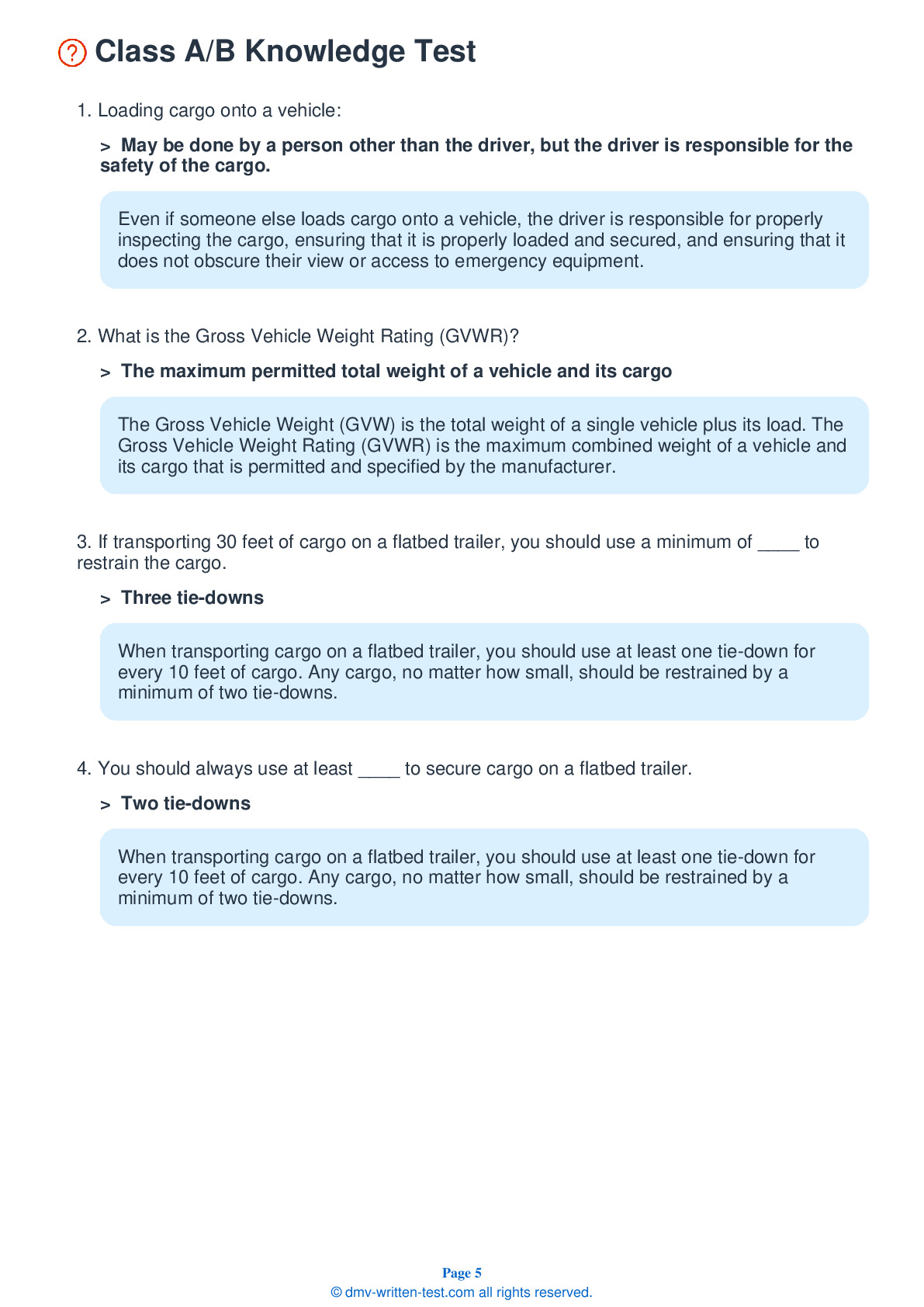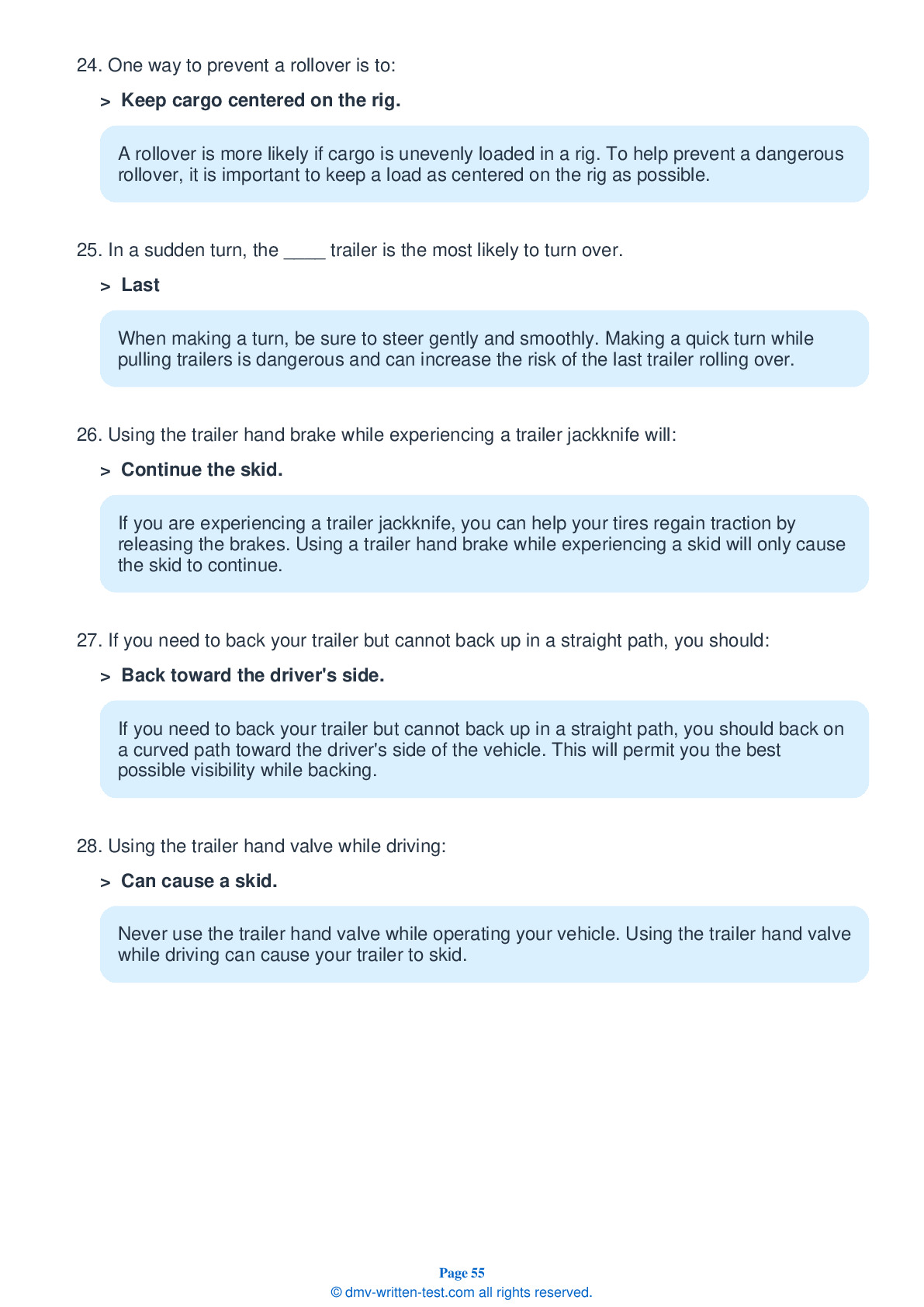Combination
All applicants who are applying for a Class A CDL should be prepared to take the Combination test. This test covers information found in Section 6 of the Commercial Driver's Manual. Section 6 provides the information needed to safely operate tractor-trailers, doubles, triples, and straight trucks with trailers. The test is made up of 20 multiple-choice questions, and applicants will need to correctly answer a minimum of 16 questions to pass. The Combination test is not a replacement for the Double/Triple endorsement test.
Number of Question
Passing Score
1. A loss of air pressure in the emergency line will cause:
Explanation
The emergency air line controls the emergency brakes on a combination vehicle. A loss of air pressure in the emergency line will cause the emergency trailer brakes to activate.
2. An Anti-Lock Braking System (ABS):
Explanation
The function of an Anti-Lock Braking System (ABS) is to prevent a vehicle's wheels from locking up during hard braking.
3. When coupling a trailer:
Explanation
When coupling, make sure you couple matching glad hands. They are often color-coded to help drivers avoid mistakes. Typically, blue is used for service lines and red is used for emergency lines.
4. In a vehicle equipped with an automatic tractor protection valve, the valve will pop out when:
Explanation
In vehicles equipped with an automatic tractor protection valve, the valve will pop out if air pressure drops to a level between 20 and 45 psi. When the valve pops out, the protection valve will close, stopping the flow of air.
5. Failure to keep the fifth wheel plate properly greased could:
Explanation
Failure to keep the fifth wheel plate properly lubricated can create friction between the tractor and trailer, causing steering problems.
6. Fully-loaded rigs:
Explanation
Because the weight of cargo gives them a higher center of gravity, fully-loaded rigs are 10 times more likely to roll over in a crash than empty rigs.
7. Trailers with low underneath clearance may be difficult to drive:
Explanation




